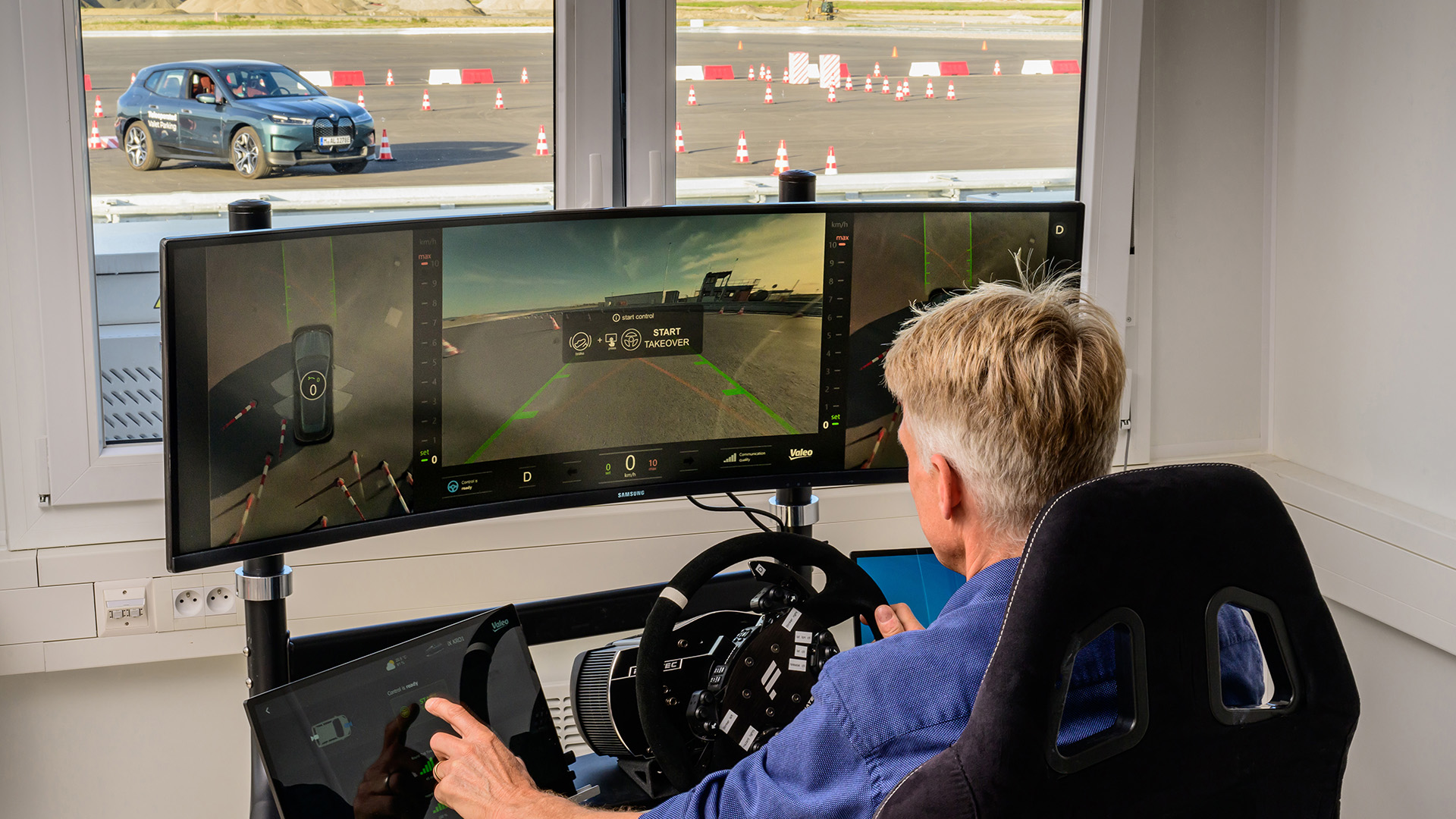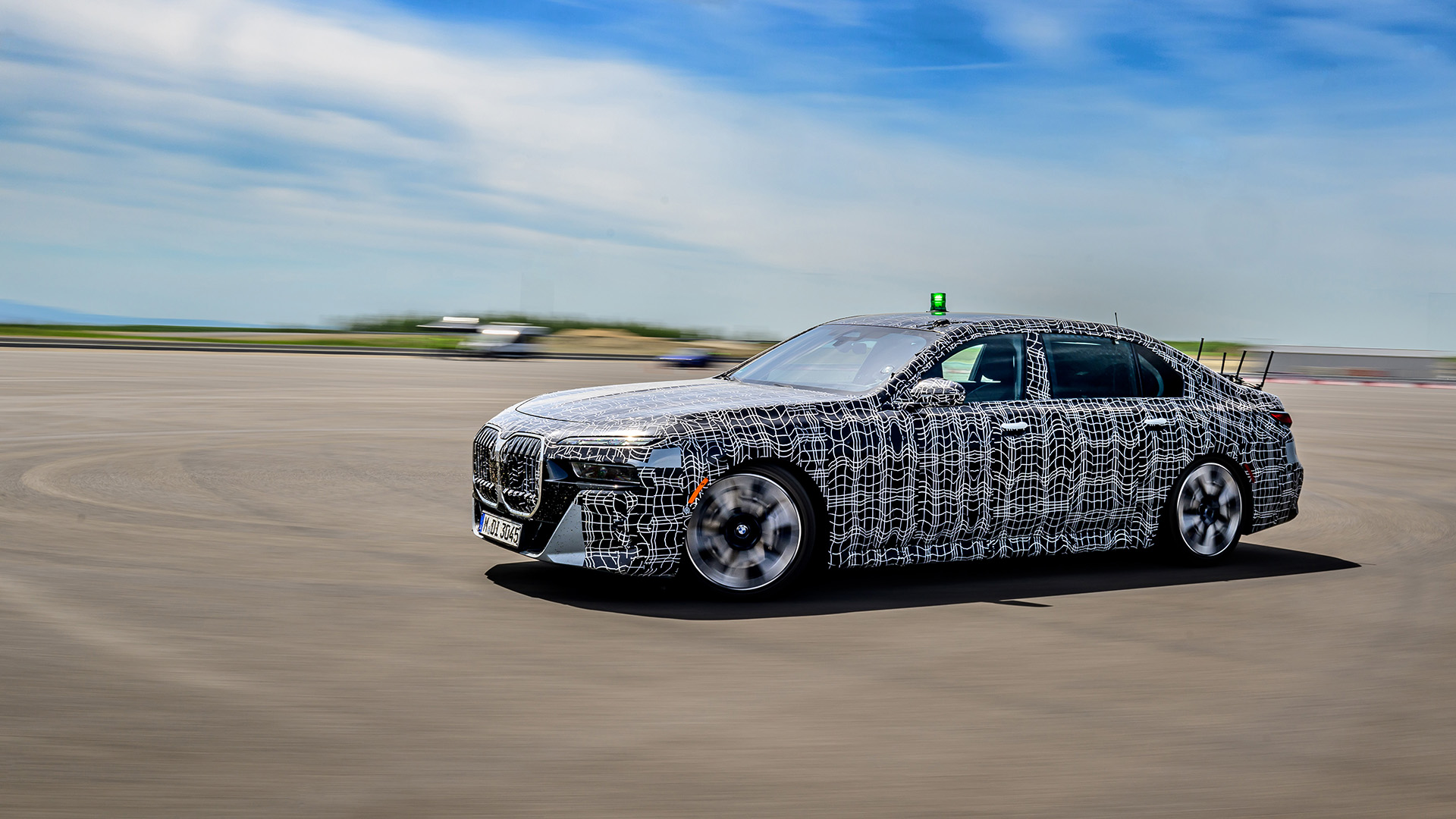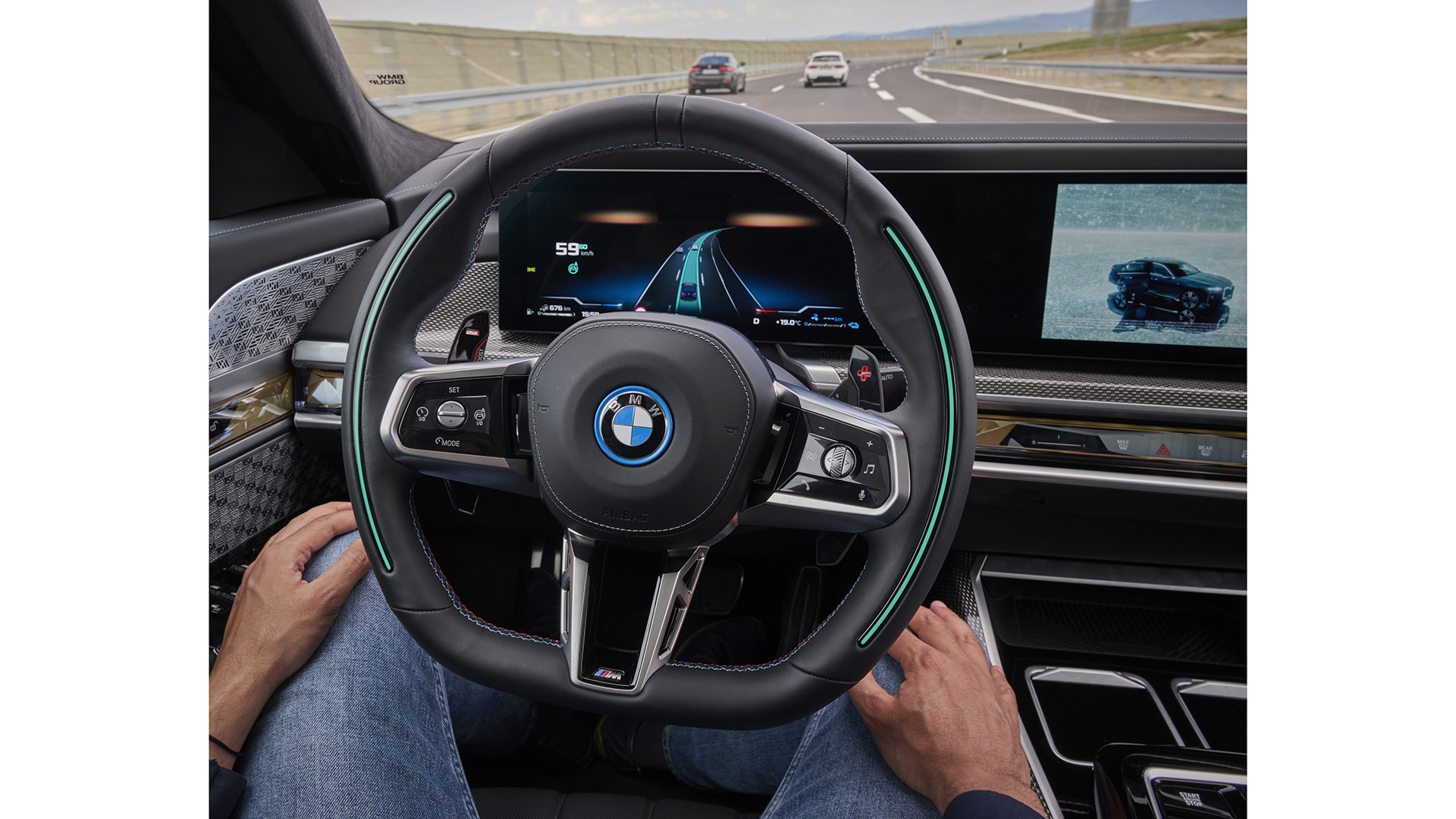Driving a BMW wearing a VR headset is the most fun I’ve had on a track
I tried the M series mixed reality racing at BMW’s Future Mobility Development Centre in the Czech Republic


I’m driving foot to the floor in one of the latest BMW M4 models on an open expanse of track. Despite being in the driving seat and travelling at race speeds I can’t actually see the road. That’s because I’m wearing a VR headset that is projecting a completely different environment in front of me.
Through the headset, I can see my hands, steering wheel and dashboard, but out of the window is a completely virtual track. First, I follow a series of arrows that take me to a starting gate before the lights turn green and the doors open onto the track, while in the car I floor the accelerator and feel the vehicle pin me to my seat.
It’s a winding course that lasts just over a minute to complete, with BMW M coins to collect along the way by driving through them, like some lifesized Mario Kart. Every now and then as I take the corner a little too fast and the car understeers, I remember I am actually driving a real car – and that can pull you out of the illusion. Mostly though, I was having so much fun I didn’t really care too much where we were actually going.

I was never in any danger though. All the time my copilot – a trained BMW M series driver – was watching the real track and had an extra brake pedal should he need it. There was also tons of room with nothing anywhere near the car.
This BMW M Series Mixed Reality experience is being offered to BMW M series fans to experience from autumn this year at locations in Europe. It allows drivers to experience the performance of an M series without a specialist track and I can attest to it being a highly addictive experience. Though BMW could have offered a Mixed Reality experience in a stationary car, or one attached to some hydraulics, it’s impossible to beat the real feeling of movement that this delivers.

The testing ground
I was trying this new technology out at BMW’s new Future Mobility Development Centre in Sokolov, Czech Republic. The purpose-built facility covers an area of over 600 hectares and includes six tracks with a total length of 25km and employs more than 100 people. It is here that BMW is developing many of its automated driving technologies, including level 3 (hands-off, eyes-off driving) and level 4 (remote driving) automation that could be deployed on future ICE and electric cars.
The facility is set to open this summer and though over the border in the Czech Republic, it is only a relatively short drive from BMW’s headquarters in Munich, making it a handy spot. There’s something of the Truman Show to the facility – there’s a full road network, including road signs from a variety of countries, roundabouts, underpasses, motorways and inner city layouts with crossroads and traffic lights.
Get all the latest news, reviews, deals and buying guides on gorgeous tech, home and active products from the T3 experts

Automated valet parking
The Level 4 automation is being tested for use in car parks and larger car lots, such as ports and fleet use. A single operator in front of what looks like an advanced PC driving sim can log into each of the cars out on the track and take control of the driving. The operator then steers, accelerates and brakes as if they were in the car, using the car’s in-built cameras to relay front, back and side views to his screens.
Movement is slow and considered, with a slight delay to avoid sudden movements and can handle a reasonable amount of signal interference. I tried driving one of the cars on the circuit through a set course and parked it between the cones with ease. If this was a commercial car park, you could leave your car at the entrance and have the operator park for you. Where this really becomes useful though is when a company is loading hundreds of cars onto a ship, or with a fleet or hire car company, having to move multiple vehicles. This saves the time the driver would take getting in and out of each car.

Driverless development
Testing cars for safety and general production means lots of time on test circuits and usually a lot of repetitive drives for the test drivers. BMW’s driverless development places a robot driver into the car that is able to repeat the same movements over and over.
The robot part is actually an advanced computer in the boot but is wired into the car’s driving controls as well as additional GPS and Wifi sensors to ensure accurate positioning on the track. An operator then sits in the mobile monitoring station and runs the pre-programmed route on the computer.
Test drivers are still very much needed for other parts of the facility but these repetitive tasks can be essentially automated and observed from outside of the vehicle.

Level 3 highway driving
My final experience at Sokolov was of BMW’s Level 3 automated driving. This takes place on the outer ring circuit of the facility, which looks like a motorway or ring road. Current BMW models including electric models like the BMW i7 and BMW iX offer Level 2 automation, and in some approved territories, an advanced Level 2 for hands-off eyes-on automation. Level 3 not only allows you to take your hands off the wheel but also your eyes, leaving you free to watch movies or shows on the infotainment system or just relax and chat to the passengers. The only thing you can’t do is fall asleep, as you must be able to take back control of the vehicle when prompted.
The Level 3 system works as a simple extension of the current CoPilot adaptive cruise control and lane centring technology. When available the ready symbol appears on the dash, along with a tone signal, at which point you press the dedicated button and enter Level 3 driving. The steering wheel then retracts slightly, giving you more room and you’re free to sit back and watch your entertainment.
The experience takes some getting used to but is set to transform the way we do motorway drives. In my test drive it handled both heavy traffic and obstacles in the road without an issue. Though this system isn’t quite ready for release yet, it’s close and is more restricted by legislation than by ability.
Though my test was only on the motorway circuit, I’m sure BMW is also testing this around its ‘city’ circuit within the Solokov facility to one day provide complete hands-free driving in any environment. I can’t wait to see this technology come into production, along with all the other advances that this development centre will bring.


As T3's Editor-in-Chief, Mat Gallagher has his finger on the pulse for the latest advances in technology. He has written about technology since 2003 and after stints in Beijing, Hong Kong and Chicago is now based in the UK. He’s a true lover of gadgets, but especially anything that involves cameras, Apple, electric cars, musical instruments or travel.